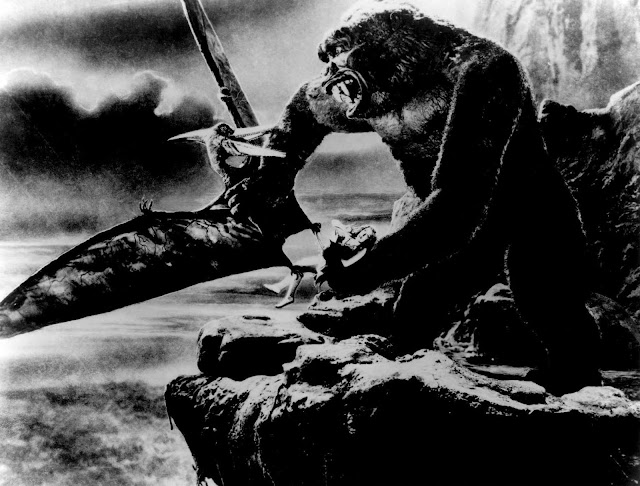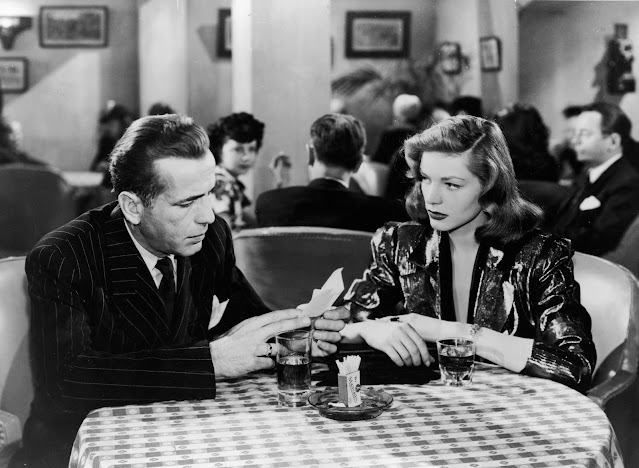Blow-Up (1966)
Michelangelo Antonioni's "Blow-Up"
By the time Michelanglo Antonioni left Italy in 1965 to make a film in the United Kingdom, many film critics believed that the string of films he made in Italy, starting with 1960's "L'Avventura," were starting to run their thematic course. While I personally don't believe that to be true and felt like Antonioni could have recontextualized his themes into various outsources, there were a growing number of people who felt that the existential modern malaise one could expect from an Antonioni film had become too pretentious or too repetitively artistic. When Antonioni's 1966 English-language film "Blow-Up" was released in the U.K., those critics breathed a sigh of relief that Antonioni was venturing into new territory and gaining some commercial traction on the way. While certain elements of "Blow-Up" seem more commercially friendly, I would argue the thematic emphasis in the film is completely aligned with many of the themes that we've come to expect from the master.
"Blow-Up" takes place in contemporary London, at a time when the youth were fully in the middle of their cultural revolution. Things are 'groovy,' let's say. It's a world of high fashion, new and experimental rock music, and in influx of art and photography. Our story centers on a fashion photographer named Thomas (although he is never actually named in the film). Thomas is renowned for his artistic photographs and has models at his door wanting to be one of his subjects. One day while taking photos in the park, Thomas photographs a young woman and an older man in an isolated area. After taking photos of them, the young woman crosses the park to ask for the copies of the photos, leaving her older friend behind. After Thomas refuses, she manages to follow him back to his loft. He takes her upstairs and the two engage in flirtatious behavior. He still does not give her the photos, but says she can have them after he processes them. After she leaves, he noticed something strange about the photos and begins to blow-up the images. He believes he has just captured a murder on film, as a man with a gun can be seen in one still, and the dead body of that man can be seen in the other. He even goes to the same park that night and confirms his paranoia by discovering the cold, grey body of the older man. After he gets back to his apartment, his place has been ransacked and his photos are gone. The next morning, he goes back to the park and discovers the man's body now missing. He then watches a group of mimes play tennis with an imaginary ball, as we the audience begin to hear the sounds of the ball bouncing on the court while we watch Thomas watch them play.
Many critics felt the film to be a change-of-pace for Antonioni, with elements of a psychological thriller or a political conspiracy emerging through the narrative. While those elements are present, I would argue however, that they fit just as nicely into Antonioni's consistent themes of existential malaise just as much as his Italian cinema before. The key difference here is the re-contextualization. Although London was a central cultural shift for the youth movements happening across the 1960s, Antonioni also makes an important visual distinction by showing the aspects of modernity that the movement is leaving behind. For example, we see shots of homeless men in a hostel, along with working class districts with men waiting in line to get into a factory. Antonioni juxtaposes these images with our photographer protagonist driving by in a Rolls Royce equipped with a modern phone car. The contrasting of these images is very clear. While the youth are celebrating the changing cultural landscape, the innovation of art and fashion, the drug revolution, and the sex revolution, the poor quality of life for the everyday person continues. In this way, the cultural revolution happening in the West is simply an extension of that malaise popular throughout Antonioni's work.
What's most notable to me is how Antonioni re-contextualized his themes through the new British landscape he was adopting. For a while, British cinema was synonymous with Hitchcockian themes of everyday people falling into a vast conspiracy in which a political maneuver is happening quietly around them without them noticing. Antonioni seems to employ this device here. The main takeaway from this structure is that the quiet individualism of Britain allows for powerful governmental forces to work quietly under civilian's very noses. Perhaps the unaware of the civilian is intentional, as they would rather not get caught up in something beyond themselves, wanting to cling to the individual mundane normalcy of their lives as a source of comfort. Perhaps it's unintentional, as the commercialism and abundancy of modern living creates a cozy blanket for one to cozy under, not having to face the reality of the political world happening around them. Either way, Antonioni, in his move to England, has embraced this thematic structure and infused it with his own personalized thematic renderings.
Being that U.K. is English-speaking, Antonioni also seems to be employing the English-speaking American perspective of the 'noir.' Now, nothing visually about "Blow-Up" in any way resembles a noir in the slightest. But, the thematic structural layout of the film completely utilizes the noir format. A man takes it upon himself to investigate a mystery. The central pull into the mystery stems from a mysterious woman, who ends up being associated with the danger. Through this naïve searching, the man begins to realize the vast network of forces that surround him and perhaps overpower his tiny understanding of the political and structural implications at stake.
I believe "Blow-Up," although adapted with the British political perspective and an American noir element, more than contains Antonioni's typical themes of existential malaise and contemporary disassociation. There is a world of political conspiracy happening all around you and the drug-fueled parties, mindless fashion craze, and commercialism of our modern world is a existential antidote meant to wrap you in a mindless fog for your own satiation and comfort. It is a marvelous film that very much taps into a contemporary post-war sentiment. Whether or not the more 'commercial' elements of the film garnish greater interest by critics and modern audiences alike is not indicative of the lack of thematic output for Antonioni. Rather, he is demonstrating the viewer's adherence in interest to the more sensational elements of the film that don't truly matter. To make matters worse, the final scene creates a sense of psychological confusion in which the reality of what we're seeing is called into question. Perhaps there is nothing to see here, and the great and powerful Oz has once again created a fantasy for us to exist in, to protect us from the overreaching powers of governance. Did the things happening in the film actually happen? Or is Thomas' perception unreliable. The fact that you're even questioning it is the point. It sure would be easier to simply chalk it all up to a distorted understanding of the truth, rather than accept the unfortunate reality of what actually happened. It's better to not ask questions. Shut up and enjoy your fashion. Shut up and enjoy your rock music. Shut up and smoke some pot. And if you even think that something else is going on here, maybe you're just crazy. Pay no attention to the man behind the curtain.




Comments
Post a Comment